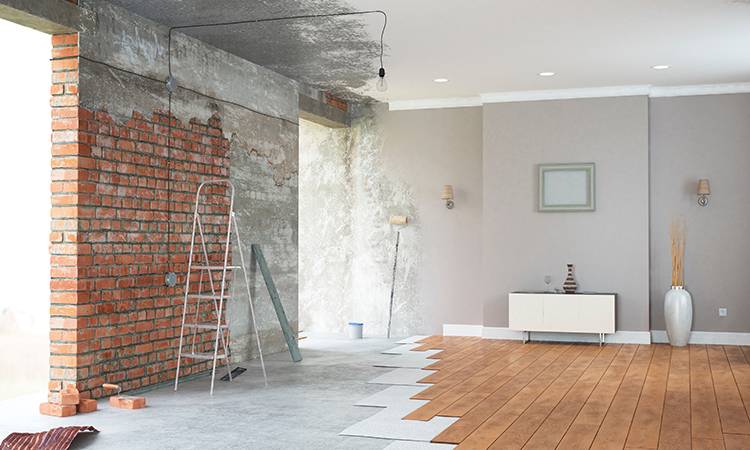How Long Does a Flat Roof Last?
Flat roofs are a common feature on many buildings, both residential and commercial. It's important that flat roof owners understand the longevity of a flat roof so that they can understand when it's time to replace a flat roof.
Below, we will outline the different types of roofing materials, factors that can influence the longevity of a flat roof, the typical lifespans, as well as how to look out for signs of deterioration. We will also provide some tips on how to maintain a flat roof to ensure it lasts for as long as possible.

The Importance of Knowing Roof Lifespan
Different flat roof materials will have different lifespans. It's important to know this information when you're purchasing a new flat roof, as this will help you to make the best decision for you and your property. There are certain signs that can indicate that your flat roof needs to be replaced, which we will go over later.
It is important to plan a new flat roof in advance as this will help you to make the right decisions and save money where you can. Knowing the different materials is essential, and knowing the costs upfront will help you to budget effectively.
If you neglect your flat roof, this could cause it to have a lower lifespan. This is why it’s important to maintain your roof to give it the best chance of lasting for many, many years.
Types of Flat Roofing Materials
Below is a list of the most common materials used for building a flat roof, with some information on each type.
Built-Up Roof (BUR)
A built-up roof is a traditional version of flat roofing material. This is usually made from gravel and hot tar. This type of roof is built with three or more plies or a waterproof material. This is then alternated with hot tar and ballasted with another layer of smooth stones.
In modern years, these roofs are made with additional materials, such as fibreglass membranes. A built-up roof is relatively low in cost and resistant to fire. These types of roofs can usually last for around 20 - 30 years.
Modified Bitumen Roof
A modified bitumen flat roof is made up of a single-ply roll, similar to an ice and water shield. However, it is impregnated with a mineral-based wear surface. There are different ways in which this roof can be installed.

Torch-down systems involve heating up the adhesive whilst the material is being unrolled. More modern versions of this roofing require a simple peel-and-stick method. The peel-and-stick versions are much easier and safer to install.
These can even be completed as a DIY job. The light-coloured mineral surface on this type of roofing material reflects heat and can help to reduce your energy costs. These types of roofs usually last for around 20 years or more with proper maintenance.
Rubber Membrane Roof
EPDM is a type of rubber which is often used for making flat roofs. This is a durable single-ply membrane material resembling an inner tube. However, it is designed to resist damage from the sun.
Rubber membrane roofs can be anchored with fasteners, ballasted with stone or glued. It is quite a light material and is highly resistant to scuffs and tears. It’s also easy to fix leaks on these roofs. These types of roofs can usually last for between 40 – 50 years with proper maintenance.
The type of roofing material that you choose may reflect how long it lasts and will also affect the level of maintenance that is required.
Cost of a Flat Roof
If you'd like to find out how much a brand-new flat roof will cost you, check out our flat roof price guide for a breakdown of all costs and materials.
Factors Influencing Roof Longevity
There are many factors that can influence how long a flat roof lasts. We will go over these factors below:
- Weather conditions – Prolonged periods of sun can cause cracking and breakages. Strong winds can cause the materials to separate. Heavy rain may cause pooling and leaks that could cause water damage to your home.
- Trees – If there are trees close to your flat roof, it’s important to ensure these are secure. Branches and leaves can collect on your roof, causing damage or affecting the way water exits the roof. Trees can also provide a passageway for pests to make their way onto your roof.
- Roofing materials – Different roofing materials will require different levels of maintenance. It’s important to know how to maintain your roof properly to ensure it lasts for as long as possible.
- Bad ventilation or insulation – Insulation and ventilation are important in your home. Without proper ventilation and insulation, this could lead to trapped heat and moisture with nowhere to go. This could weaken the roof and cause damage.
- Lack of maintenance – As mentioned, maintenance is very important to ensure the longevity of your roof. Regular roof inspections will ensure that you identify any small issues quickly before they become much bigger problems.
- Age – As your roof gets older, it will become weaker and more prone to damage. It is important to know the flat roof's lifespan so that you can replace it when needed.
Typical Lifespans of Flat Roofs
The length of time that your flat roof lasts will depend a lot on the type of material that is used. However, in general, flat roofs tend to last for around 20 – 30 years.

With proper maintenance, some flat roofs can last for up to 50 years. As your roof becomes older, it’s important to inspect it regularly so that you can identify any issues quickly and perform repairs as needed.
In some cases, a brand new roof may be the better option over a repair, especially if your flat roof is getting close to the typical lifespan age of 20 – 30 years.
Signs of Roof Deterioration
There are several common signs of deterioration on your flat roof. Below is a list which outlines the most common signs of deterioration to look out for:
- Water pooling on the flat roof
- Tears, rips, and ripples
- Separating flashing
- Water spots on your ceiling
- Issues with the membrane
- Cracks appearing in the coating
- Loose fasteners
Maintenance and Repair
Roof inspections are important to ensure your roof is in good working order. A roof inspection involves thoroughly examining all of the roof from an inside and outside perspective.
During your roof inspection, you will need to look for things that highlight the current performance of your roof and also identify any problems that may need to be corrected.
From the ground, you will need to look at the condition of the roof materials and the soffit materials that cover the overhang. Then, use a ladder to get a closer look to see if any water has made its way down the edges of the roof.

You will also need to inspect the gutters and downspouts to make sure they are free from any standing water. The gutters and downspouts will also need to be properly attached and functioning as normal. You will also need to properly examine the roofing material. Where it is safe, you may need to get onto the roof itself.
Additionally, you will need to inspect vent pipes, roof vents, and media installations in the roof. Make sure all of these are correctly sealed to keep water out, and also ensure they are in good working order. You must also ensure that all flashing is up to code, in good condition, and working correctly.
Any chimneys and skylight materials must also be inspected to make sure they are in good condition and not causing any problems. Finally, you need to inspect the attic or ceiling underneath the roof for any water damage or stains, as this may indicate a roofing problem.
Any problems that you identify during a roof inspection should be rectified as soon as possible to ensure the longevity of your flat roof.
The Decision to Replace
If you notice any big problems with your roof or if your roof is getting close to its average lifespan of around 20 – 30 years, you may then need to consider getting a roof replacement. If you are finding that you are having to do a lot of repairs often, it may be more cost-effective to opt for a brand new roof.

The cost of a new roof will depend on several factors, such as the size of the roof, the materials used, and your location in the UK. Those based in and around London will pay more for the labour costs of the job than those based in other areas of the UK.
It’s a good idea to get a few different quotes from local roofers to ensure that you can get a good price for the work at hand. It’s also a good idea to look at reviews and ask around for recommendations to find the best roofing contractor for you.
In general, flat roofs tend to last for around 20 – 30 years. With proper maintenance, your flat roof may last even longer. Regular roof inspections will help you to identify any issues early so that you can repair or replace them as needed, ensuring your flat roof lasts for as long as possible.
Sources
https://spsroofingltd.co.uk/blog/how-long-does-a-flat-roof-last
https://www.chrisballroofing.co.uk/what-factors-can-affect-your-roofs-lifespan
https://www.billraganroofing.com/blog/how-long-flat-roof-last








